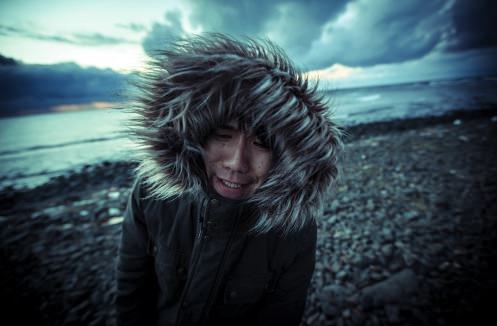A new study has been released exploring the DNA of current and ancient people of places like Alaska, Greenland, and Siberia, revealing that a number of cultures survived the harsh climate for thousands of years.
The study conducted by an international team headed by the Centre for GeoGenetics at the Natural History Museum of Denmark, University of Copenhagen, showed that the Paleo-Eskimo, who lived in the Arctic from about 5,000 years ago until about 700 years ago, represented a distinct wave of migration, separate from both Native Americans.
Lundbeck Foundation Professor Eske Willerslev from Centre for GeoGenetics at the Natural History Museum, University of Copenhagen, said that the Paleo-Eskimos were the first people in the Arctic, and they survived without outside contact for over 4,000 years.
Dr. Maanasa Raghavan of Centre for GeoGenetics and lead author of the article, asserted that the Paleo-Eskimos, after surviving in near-isolation in the harsh Arctic environment for more than 4,000 years, disappeared around 700 years ago about the same time when the ancestors of modern-day Inuit spread eastward from Alaska.
Co-author Dr. William Fitzhugh from the Arctic Studies Centre at the Smithsonian Institution said that ever since the discovery of a Paleo-Eskimo culture in the North American Arctic in 1925, archaeologists had been mystified by their relationship with the ‘Thule’ culture ancestors of the modern Inuit.
Agencies/Canadajournal
 Canada Journal – News of the World Articles and videos to bring you the biggest Canadian news stories from across the country every day
Canada Journal – News of the World Articles and videos to bring you the biggest Canadian news stories from across the country every day




Up to 700 years ago ? They must have come into contact with the Vikings.
Vikings were also going extinct by that time.
Khmer went down 1431.
North Mayan 1450.
Last Vinland trips 1450.
These guys just got caught up in the ‘severe cooling’ stage of the Little Ice Age, 1430-1455. A couple bad years is all it takes!
if we don’t find evidence of something, it never existed. but, we know the northern half of the globe was scraped clean by ice ages. so, we conclude that no people or civilizations existed wherever the ice reshaped the land. still, there is that thing we sort of know. beringia, pre flood mediterranean, lower sea levels and the possibility that civilization can exist for thousands of years without leaving a trace. all that land mass before the ice, and nothing existed? just because we don’t find it? we call old things paleo. what about pre-paleo? before the old stuff. before the ice wiped it clean?
Interesting proposed timing for the Inuit to have wiped out paleo-Eskimos, 700 years ago. About the same time (within 100 years), the Inuit are also thought to have wiped out the Vikings in Greenland. This period also coincides with the end of the Medieval Warm Period, a brief, mild global warming that permitted Viking exploration in the north Atlantic, and probably also allowed the seafaring Inuit to expand across the Arctic Ocean. The end of that warm period around 1400 would have forced tribes to compete for scarcer resources, and the Inuit, with better technology for maritime hunting, won that contest.
So much for Inuit (and almost certainly all other “native”) claims of being first nations endowed with greater rights than any other Canadian.
It seems to me most likely that all of the peoples who were in North America before the Europeans arrived were descended from immigrants who took this land by force from prior inhabitants.